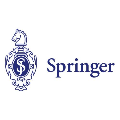An assumption that has often been used by researchers to model the interference in a wireless network is the unit disk graph model. While many theoretical results and performance guarantees have been obtained under this model, an open research direction is to extend these results to hypergraph interference models. Motivated by recent results that the worst-case performance of the distributed maximal scheduling algorithm is characterized by the interference degree of the hypergraph, in the present work we investigate properties of the interference degree of the hypergraph and the structure of hypergraphs arising from physical constraints. We show that the problem of computing the interference degree of a hypergraph is NP-hard and we prove some properties and results concerning this hypergraph invariant. We investigate which hypergraphs are realizable, i.e. which hypergraphs arise in practice, based on physical constraints, as the interference model of a wireless network. In particular, a question that arises naturally is: what is the maximal value of $r$ such that the hypergraph $K_{1,r}$ is realizable? We determine this quantity for various values of the path loss exponent of signal propagation. We also investigate hypergraphs generated by line networks.
翻译:暂无翻译




